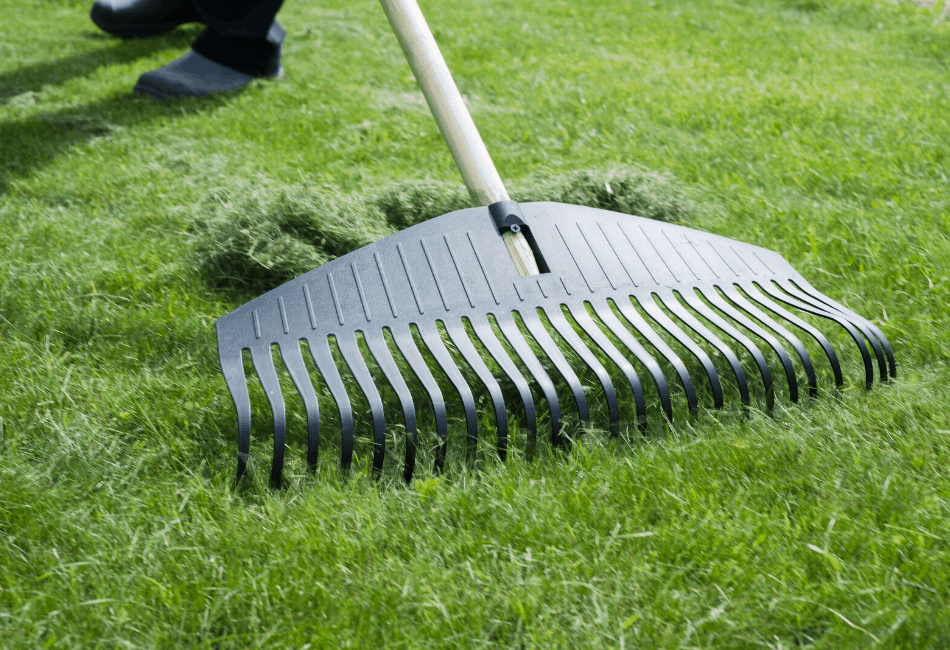Grass clipping are commonly beneficial to a lawn and should not be collected in many cases. When clippings become small from mulching, they fall between the grass blades to later provide a natural fertilizer as they decompose.
This grass clippings fertilizer provides nitrogen, potassium, and phosphorus with nitrogen being the most abundant nutrient supplied. These are the most common nutrients found in store bought fertilizers that are often labeled as NPK on the packaging.
You will greatly reduce your lawn fertilizing needs if you leave clipping behind through mulching. Gardeners.com states that clippings can provide up to 40 percent of the fertilizing requirements of a lawn for the year. That’s a lot of potential money saved on fertilizer.
Table of Contents
When To Collect Grass Clippings
Leaving grass clippings behind is not always best for the lawn. There are times when clipping are not beneficial to the lawn and should be collected. Here are a few primary reasons when you should collect grass clippings:
Excessive Buildup
A lawn that is allowed to grow tall and then is mowed low will inevitably leave behind an excessive amount of clippings. This is especially true if the lawn is wet. The clippings will clump together to create unsightly mats across the lawn that should be raked up. If these mats remain on the lawn, you run the risk of smothering your lawn, which will starve it from receiving nutrients and potentially kill it.
Disease
If your lawn has a disease, it can be spread to other areas of the lawn through the clippings. Collecting the clippings will help isolate the disease so that it can be easily treated. You should also consider bagging your clipping when your lawn has a disease if your lawn mower has this option.
How To Collect Grass Clippings
Bagging
The easiest option for collecting grass clipping is by using the rear bagger on the lawn mower. The clippings are chopped up by the mower blade and collected in the bagger. The bagger can then be emptied into a lawn refuse bag, compost pile, or other appropriate location.
Raking
Many lawn mowers do not have bagging capabilities. It then becomes necessary to deal with the clippings left on the lawn. The best way to do this is by using a high-quality rake that will efficiently collect the clipping but will not pull up the lawn. We recommend using The Groundskeeper II Rake found on Amazon for this purpose. It is also an excellent tool for mulch, leaves, and lawn debris cleanup. The clippings can be collected in a pile and then picked up using the rake and your hands.
Lawn Sweeper
A manual lawn sweeper is pushed across the lawn to pull up lawn debris in its path such as grass clipping and leaves. The debris collects in a bagger attached to the machine that is emptied when full. You can think of a lawn sweeper as being like a bagging manual push mower without the ability to cut the grass. This Earthwise Sweeper (pictured below) found on Amazon is an example of one of these machines.

Lawn sweepers can also be purchased that attach to lawn tractors. They are pulled by the tractor to collect a large amount of lawn debris. This Agri-Fab Tow Behind Sweeper is an example of a quality machine that both cuts and sweeps as it works.
Multiple Lawn Mower Passes
If you do not feel like collecting your clippings, you can always make several passes over them with the mower. Each pass will cut the clippings into smaller and smaller pieces until they are no longer noticeable. This can be laborious and time consuming depending on the quantity of clippings you have on your lawn.
Preventing Excessive Grass Clippings
Here are a few tips to prevent the need to collect grass clippings:
Mow Tall
Walk around any suburban area in America and you will likely notice many yards with near putting green mowing heights. For the average home lawn, this is way too short. Raising the mowing deck height on a lawn mower reduces clumping and helps promote a healthy lawn. Most lawns do best best when mowed above three inches and only one-third of the grass blade is removed at one time.
Frequently Mow
People often mow at the same frequency no matter how slowly or quickly the grass is growing. However, mowing should be done based on growth. This often means more frequent mowing in the spring and fall when the lawn is thriving/rapidly growing and less mowing in the summer when temperatures are often extreme and the lawn is dormant. See our article on how often to mow a lawn for more information on this topic.
Mow When Dry
Wait for the grass to dry from dew or rain before mowing. As we previously stated, wet grass often leads to clumping that can be avoided by delaying mowing until things dry up. You will save yourself a lot of time by not having to deal with wet grass clumps.
Mulch
Lawn mowers equipped with mulching blades cut the grass into fine pieces. This allows the clippings to easily fall between the existing grass where it can decompose and feed the lawn. A mulching blade helps reduce the amount of clippings that may need to be cleaned up since it produces tiny pieces of cut grass.
If you plan on upgrading your mower soon, look for one that at least mulches and better yet, both mulches and bags for the best options for mowing. Also keep a sharp blade by buying a lawn mower blade sharpener or having a professional sharpen it for you.


